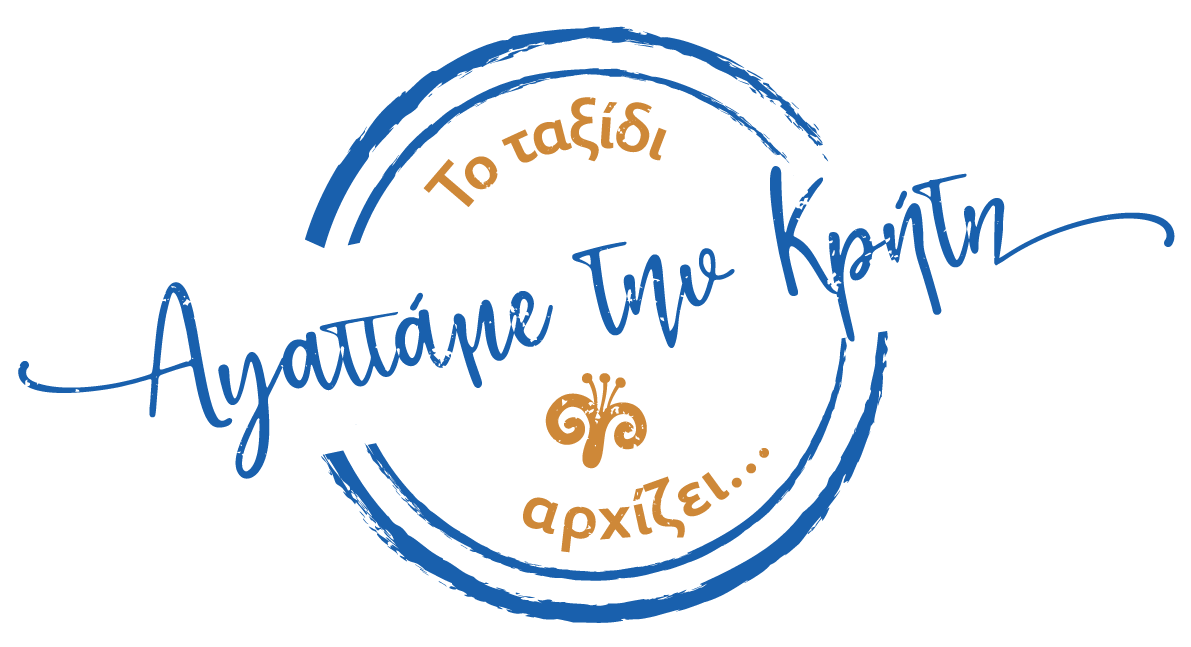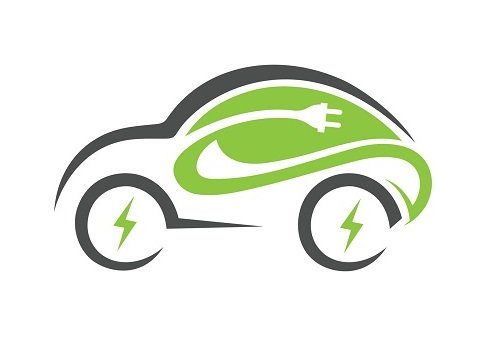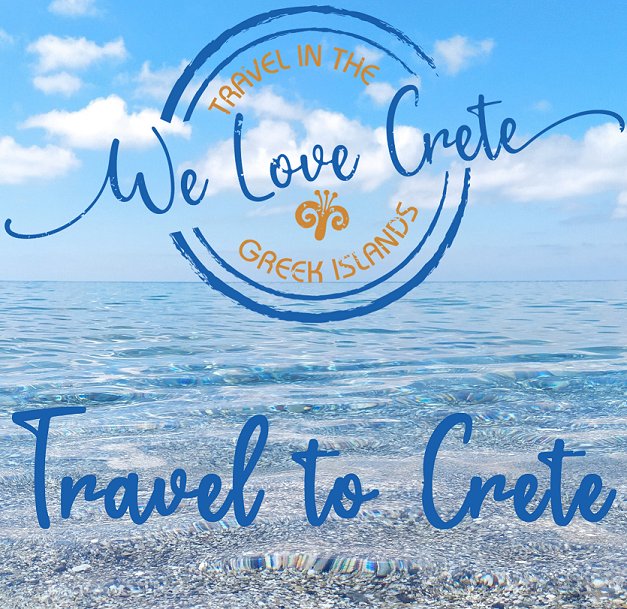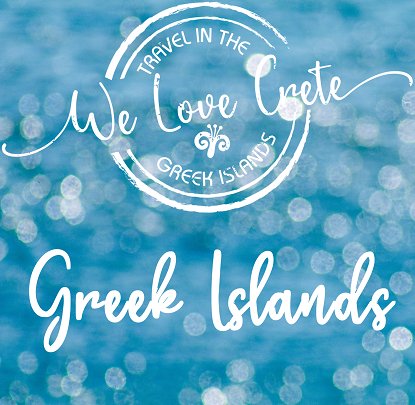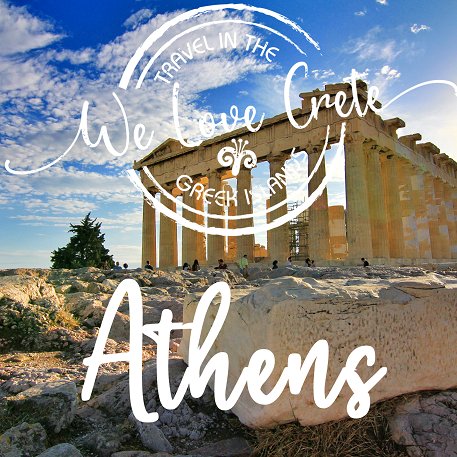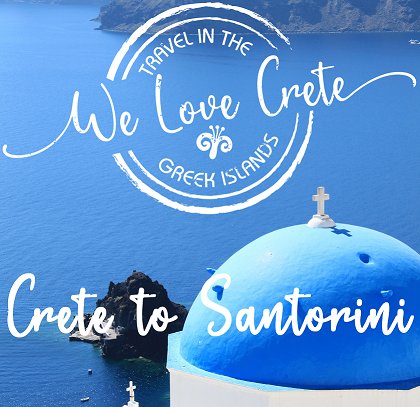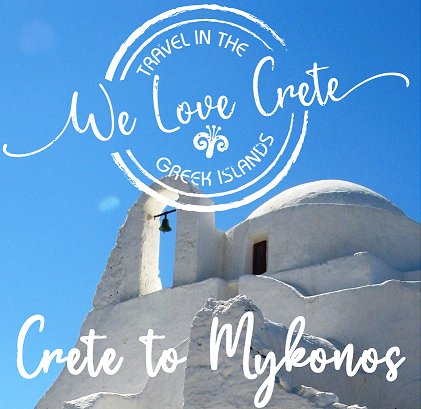- Home
- Cretan Mountains
- Sfakia
This page may contain affiliate links, see our disclaimer here.
Sfakia
Wild Crete
By Katia Luz
The mountainous region Sfakia of in the south-east of the island of Crete in Greece., located in the Chania region. Known for its proud and fiercely independent people, this is a heartland of Crete, with a tremendous history.
About Sfakia
The area is made up of rugged rocky mountains and gorges, steep hills and valleys and a steep, cragged coastline to the south. Away from mass tourism, the transport here is by ferry.
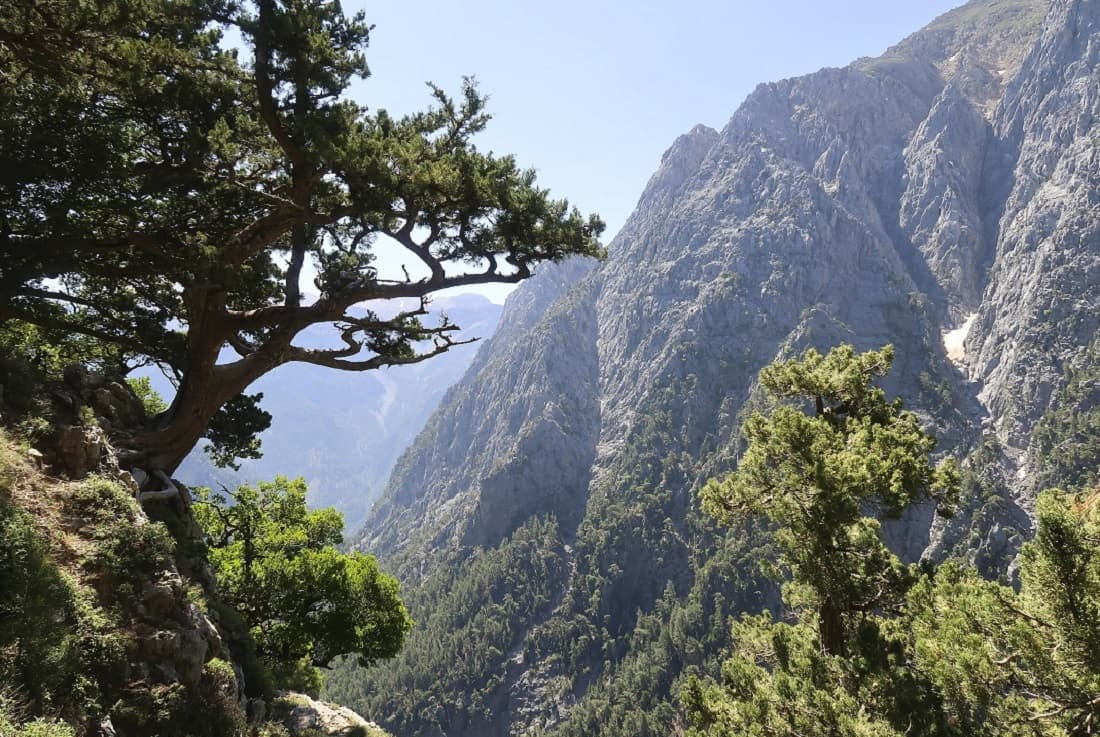 Samaria Gorge
Samaria Gorge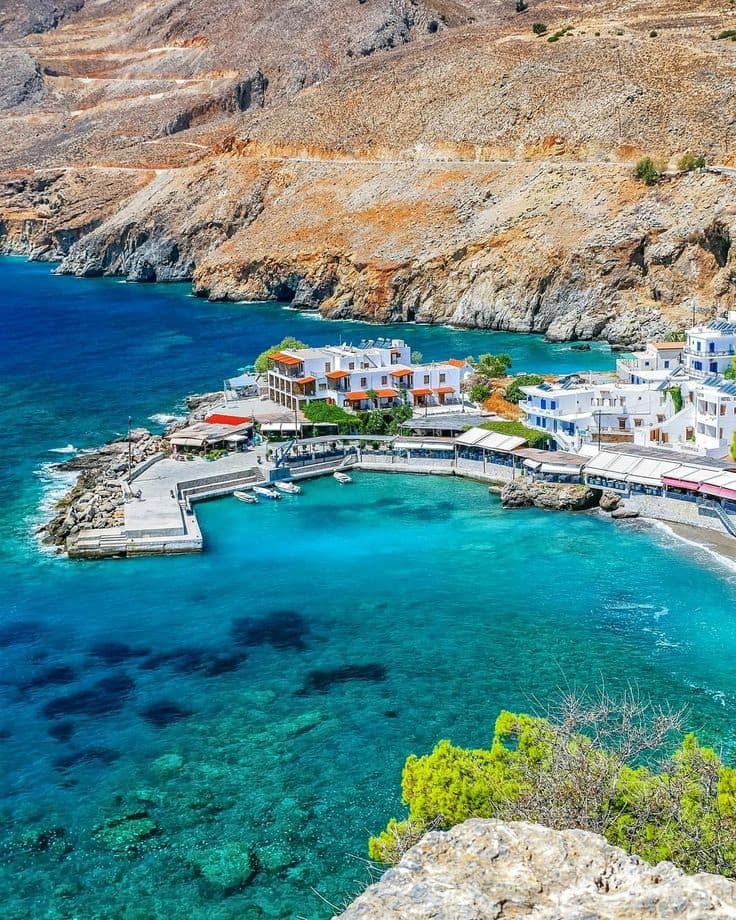 Chora Sfakion
Chora Sfakion
To get to Χώρα Σφακίων, travel from Chania town to the leafy village of Vryses, then to the high Plateau of Askifou ringed by the White Mountains, then on through spectacular mountain and gorge landscapes as the road travels along the Imbros Gorge,
then south to the town. The total journey is 70 km but it can take as
long as you like, with plenty of stops to admire the views and take in
the fresh mountain air.
This region is for sure-footed sheep, mountain goats and shepherds, it is very rugged, inhospitable and sparsely populated, the beaches in the south are inaccessible, the steep mountains plunge straight down into the sea.
Because of its fierce and impenetrable landscape, throughout
history the region has been the sanctuary for rebel fighters and allied
armies alike.
History
For four hundred years Crete was occupied by the Ottomans, however if you speak to a local they will remind you, that these people never capitulated to either the Venetian or Ottoman rulers, and mounted many rebel armies to fight for their independence during countless campaigns against them.
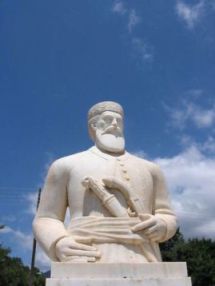 Daskalogiannis
DaskalogiannisThe most notorious rebel leader was Ioannis Vlachos, known as Daskalogiannis, born in the village of Anopolis, who mobilised the locals against the Turks in 1770. Without the promised outside help, the local forces were driven to surrender.
Daskalogiannis was skinned and hanged in proud silence in Heraklion in 1771, becoming a most remembered son of Crete. A memorial statue to the hero can be seen in his village of Anopolis, in the mountains.
During the second world war, many British and Australian troops owed their lives to the Sfakians, who helped them through the mountains, away from the fighting and to the southern beaches where they were evacuated by ship to Egypt.
Hiking, Local Customs & Ghosts
In today's more peaceful times, the fierce independence still lingers, however visitors will be safe to visit the Σφακιά region, and especially enjoy the peace and quiet of the mountains and the remoteness of the beaches. Just don't insult anybody's mother in a hurry! Keep your respect for these mountain people and they will keep theirs for you.
Hikers love the vast and expansive scenery, whilst enjoying the many different ecosystems in the island of Crete, perhaps taking the 320 km trek along the European Walking Path E4, which passes through the White Mountains and this region.
Peter Trudgill is a long time visitor and lover of Sfakia who has written a book about his experiences, named "In Σφακιά – Passing Time in the Wilds of Crete".
Frangokastello, now a sleepy beach side village, was once a strategic defense location for the Venetians, who constructed a fort on its low lying peninsula. The fort was taken into many hands throughout the history of Crete, and now lies in ruins; a fascinating reminder of times past.
The intrigue of the castle at Frangokastello is deepened by the local stories of ghost sightings at a certain time of year.
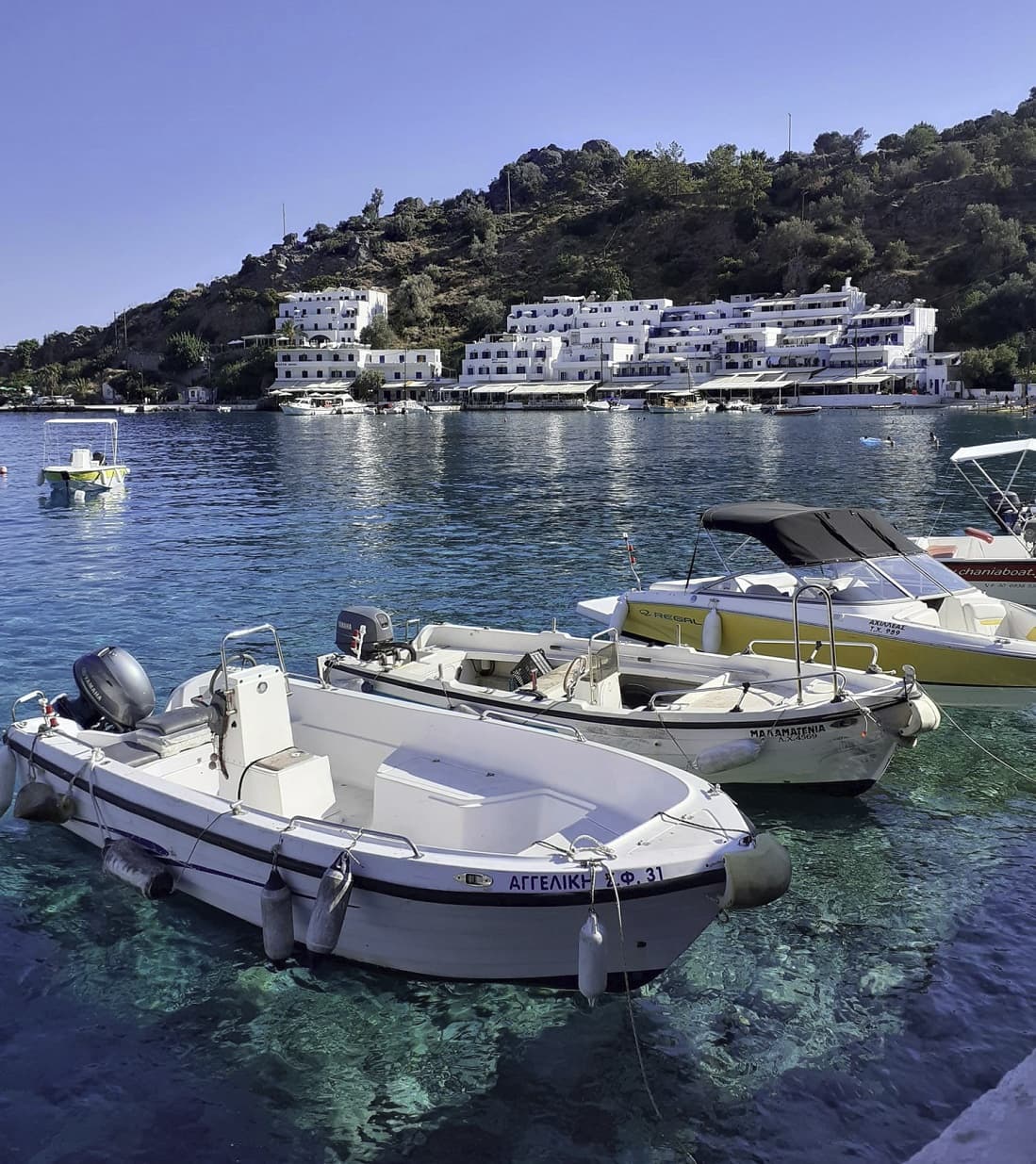
Loutro Village, (above) is a tiny seaside village of Sfakia accessible only by hiking or by boat.
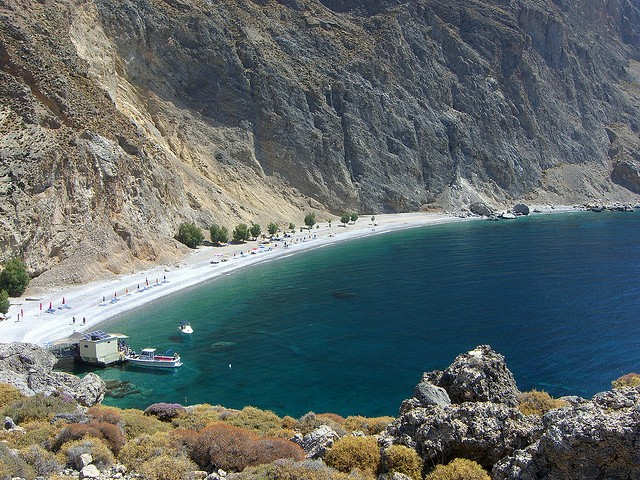 Sweetwater Beach - between Chora Sfakion and Loutro
Sweetwater Beach - between Chora Sfakion and LoutroSamaria Gorge
- Samaria Gorge is within the Sfakia region; on the mountainous and gorge areas can be seen extraordinary wildlife such as vultures, eagles and the native Kri Kri goats, see more on our nature pages.
- More on the Samaria Gorge Walk here.
- The walk is open from May to October only and can be closed if there is heavy rain.
- The gorge walk can end or start at the small village of Agia Roumeli.
- Take an organised Samaria tour - more info here.
- You can walk the gorge independently, if you have a bit more time. To take the bus to this region from Chania, you need to change at Vryses. At certain times of the year, there are only a few local buses to Chora Sfakion so check the timetable carefully.
More day trips to Samaria below - with all the transport and logistics taken care of:
Imbros Gorge
A shorter walk than Samaria, this lesser known canyon is just as beautiful. Take a hike downhill over rocks and between steep cliffs. Imbros Gorge walk is 8 km and runs from the village of Imbros, south of the Askifou Plateau, to the village of Komitades, near the south coast.
Make the trek independently or choose a local guided experience, below.
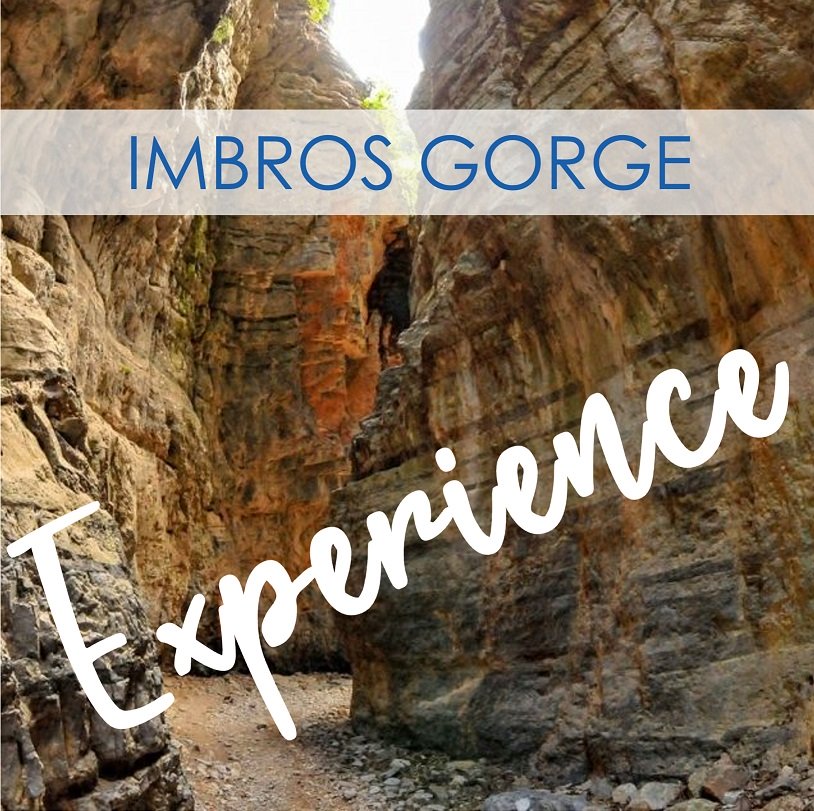
Imbros Gorge and Libyan Sea Day Tour - this is a delightful day of contrasts exploring Sfakia in nature. Take the walk with an experienced guide, relax at tavernas for lunch, then swim in crystal clear waters. 9 hours.
Ferry
Many visitors come to Sfakia to take the south coast ferry to the small inaccessible beaches and villages that dot the coastline, or to take the ferry to the island of Gavdos.
The south coast ferry is run by Anendyk SA - see timetable information below.
Accommodation
Below we suggest some accommodation in the Sfakia area:
- Chora Sfakion
- Loutro
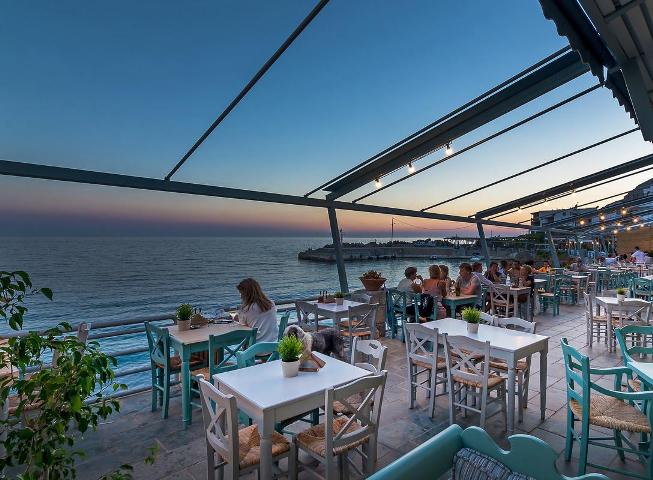
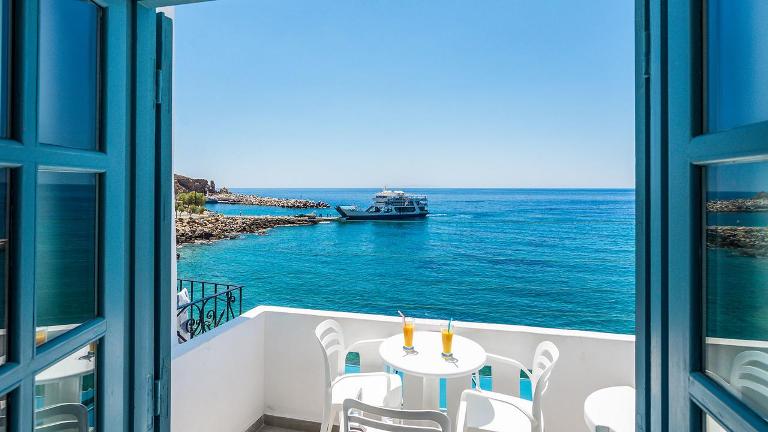

In Chora Sfakion you can stay the night before or after your ferry ride to the southern beaches. Livikon by the Sea is handy to the centre of the village and the port, with its own taverna by the bay.
"The room was really nice. It was lovely to listen to the sea all day. Location is also good, and we really liked the town itself - peaceful and charming. Outdoor furniture could have been more comfortable, but it works. Staff were helpful!"
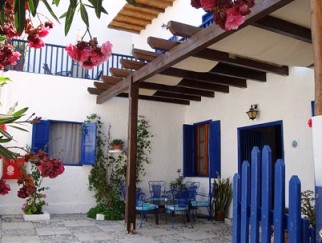
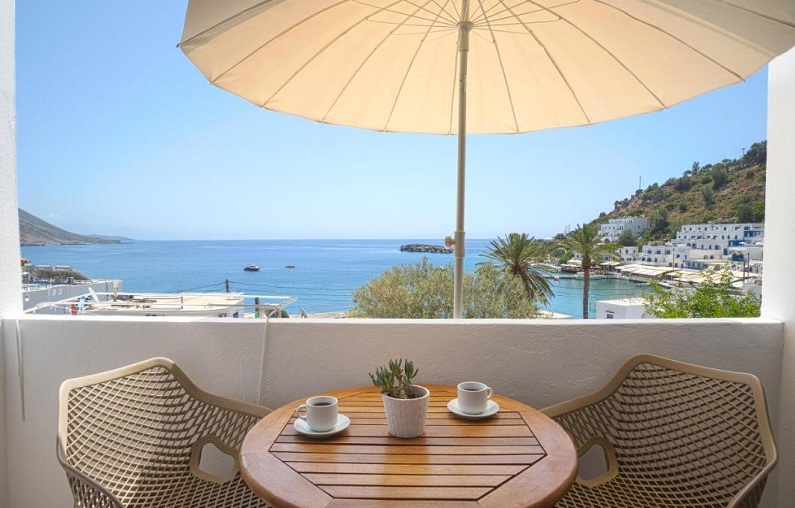
In Loutro we suggest Villa Niki just a little back from the water with views from the balcony rooms, quiet with a garden, away from the tavernas, yet very close to wander around this magical village.
"Exceptional. A beautifully furnished studio, equipped with everything you need for your stay. Hosts are responsive and the view from the balcony is amazing!"
Local Food
Once you are in Sfakia, try the local 'pies', delicious thin pancakes, with local cheese and mountain honey.
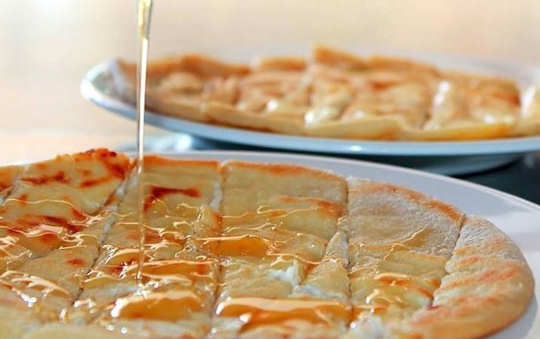 Sfakian pies with local honey
Sfakian pies with local honeyAt the Dourountakis Bakery in Chora Sfakion you will find these local specialties and those who are crazy about them. Warning they can be addictive.
Try 'Sfakiano lamb' local lamb, mizithra cheese, fresh caught seafood and 'Cretan salad' or dakos. Get ready to taste local olive oil. Try mezedes or little plates - of everything! Try the local wild greens - horta - including stamnagathi. Ask for 'dopio fagito' or local food.
A very proud local speciality for food lovers is the Sfakiano giahni Σφακιανό Γιαχνί - slow cooked kid.
Don't forget to try one of the local delicacies - Snails in Rosemary - here called Chochlious boubouristous Xοχλιούς μπουμπουριστούς.
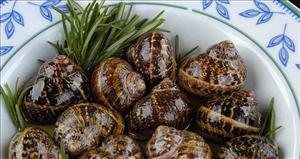
Videos of Sfakia
Below is a beautiful video of the region...including the Lefka Ori, much of the beautiful scenery and wildlife of the region, such as the gorges, caves, wildflowers, the Omalos Plateau and more.
Here you will see the cooking of Snails in Rosemary
Eftikis the Happy Traveller shows us around Sfakia
Exploring Sfakia
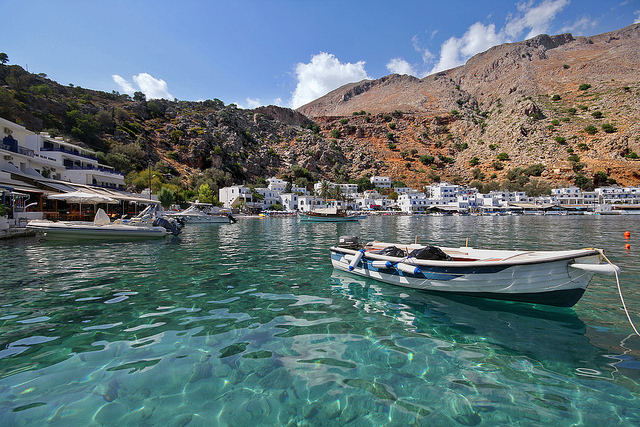
Loutro Village
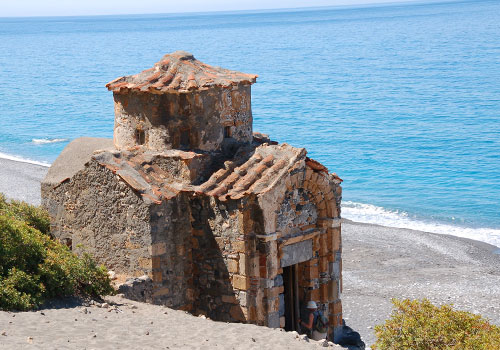
Chapel on Agios Pavlos beach
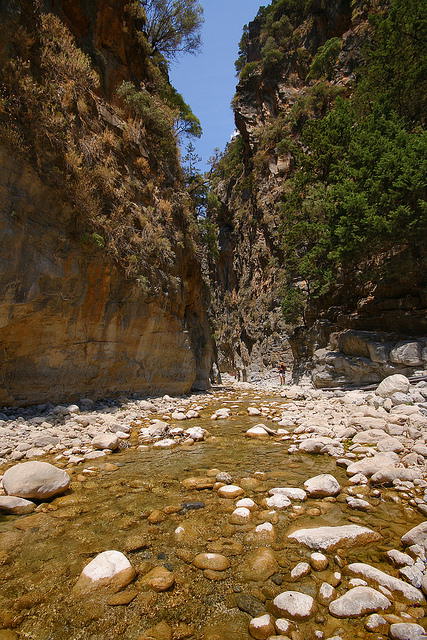
Samaria Gorge
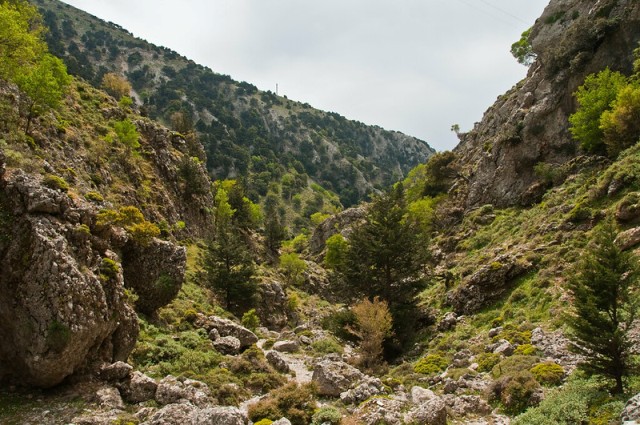
Imbros Gorge
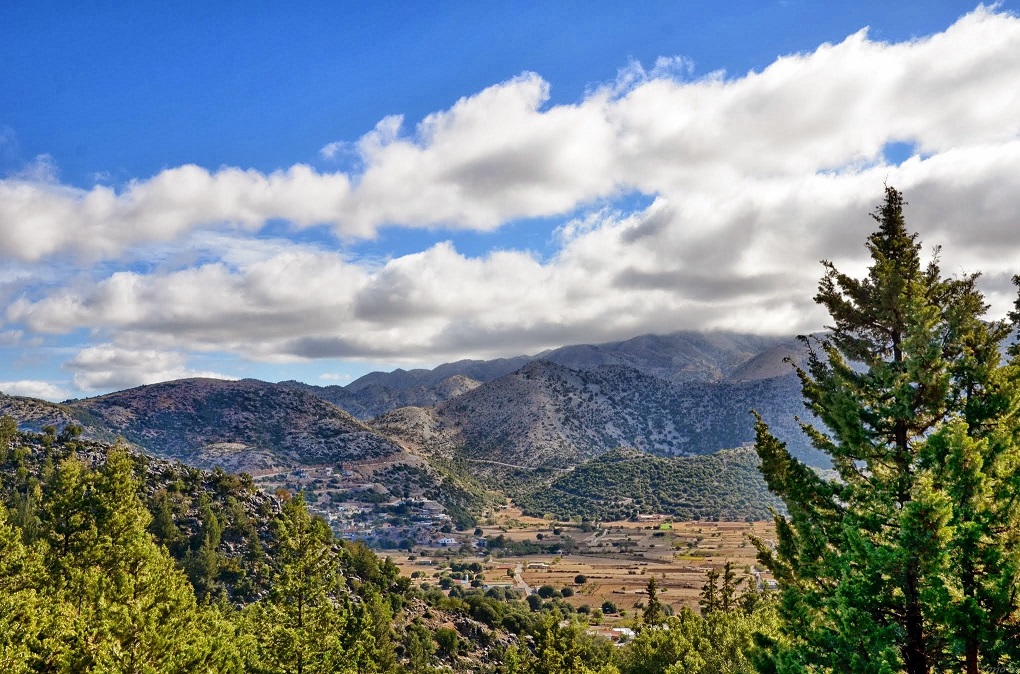
Askifou Plateau
Getting Here
Take a 1 hour flight from Athens to Heraklion with Aegean Airlines or Olympic Air, with many flights available per day.
Or take a 9.5 hour overnight ferry from Pireaus port of Athens to Heraklion port.
More on flights and ferries below.
Car hire in Crete is a really good idea as it is a large island 60 km by 260 km. There is so much to explore.
When you book with our car rental partners - Rental Centre Crete - you are supporting a local company with excellent service and easy online booking. We are sure you will be well looked after by the team. Choose from hybrid, electric or regular vehicles.

We trust you have enjoyed these tips from the We Love Crete team. Evíva!
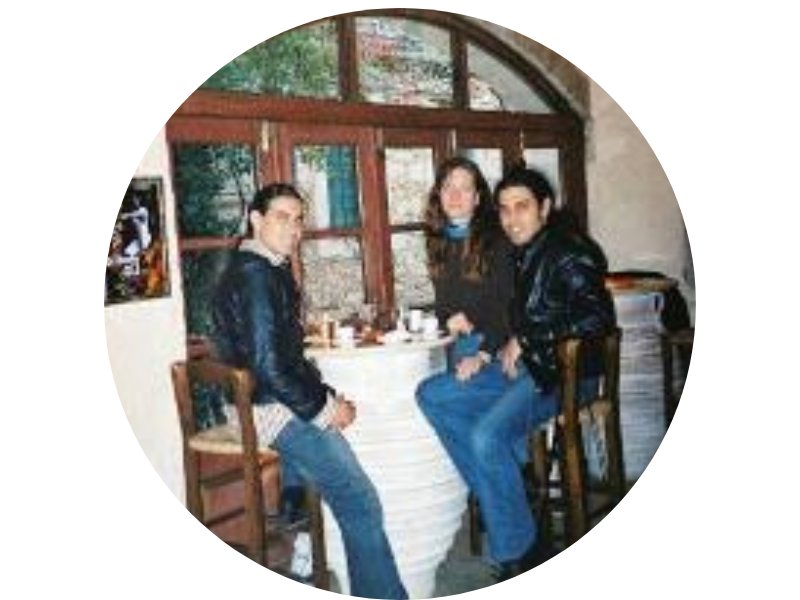
Yiásas!
Anastasi, Apostoli & Katia
are the We Love Crete team
We just love sharing our passion for Crete, Greece and travel
About us Contact Us Kaló taxídi!
About the Team
Yiásas!
Anastasi, Apostoli & Katia
are the
We Love Crete team
We just love sharing our passion for Crete, Greece and travel
About us

